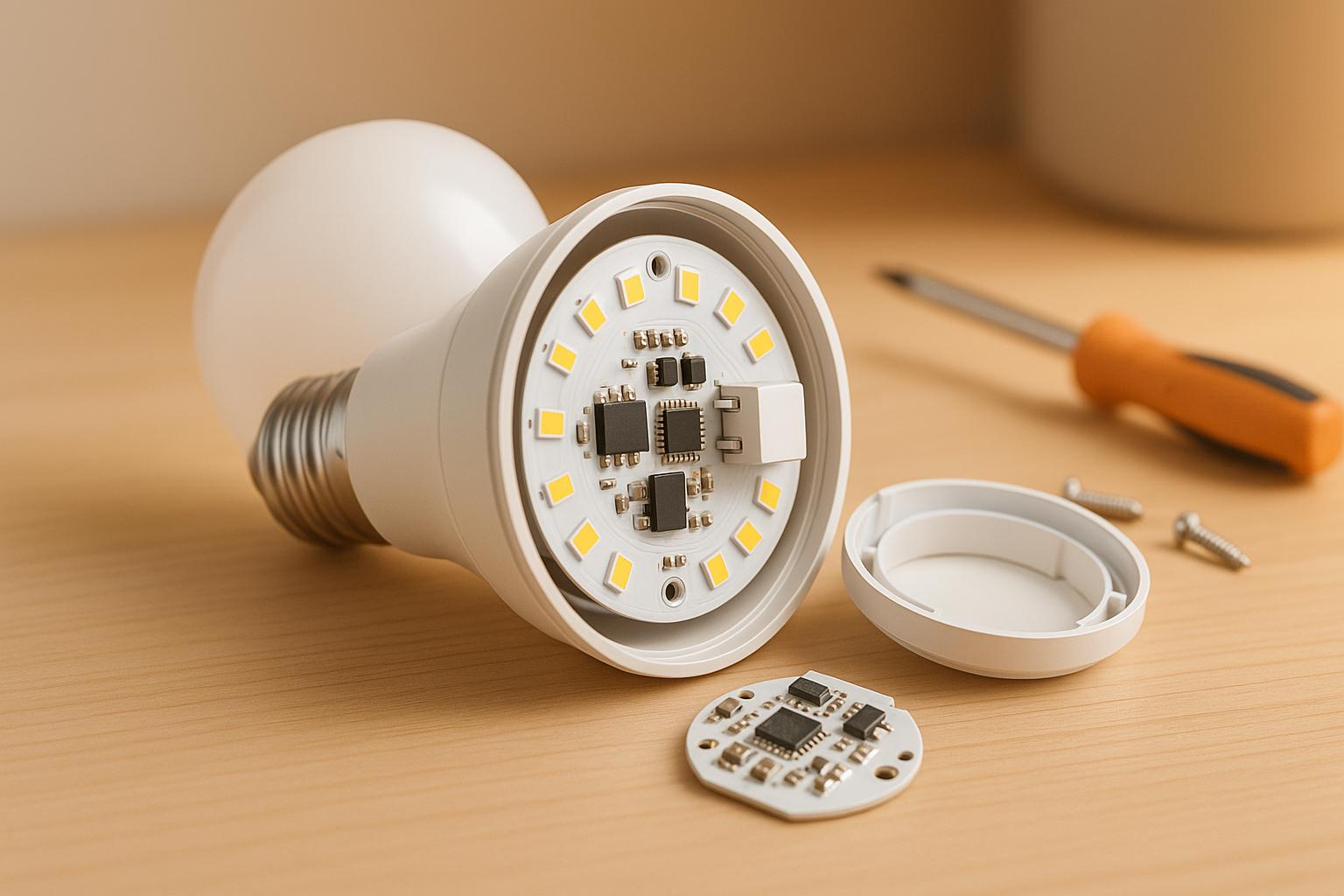Discover the challenges and solutions surrounding replaceable components in LED lighting and their role in sustainable maintenance.


The lighting industry has undergone a massive transformation with the advent of LED technology. Promising better energy efficiency, longer lifespans, and improved quality, LEDs have revolutionized the way we think about lighting for schools, offices, and industrial spaces. Yet, as the industry enters its second decade of widespread LED adoption, a critical issue is emerging: the lack of replaceable components in LED luminaires. This article explores the challenges, opportunities, and potential solutions highlighted in a recent expert discussion on this vital topic.
LED lighting has been hailed as the ultimate solution for sustainable, efficient lighting. However, as the technology has matured, unforeseen problems have started to surface. One of the most pressing issues is the inability to replace failed components such as drivers, LED boards, or chips, leading to costly system overhauls and significant waste.
Many early LED installations, especially those designed 5-10 years ago, are now experiencing mass failures shortly after their warranties expire. Facility managers, schools, and commercial property owners are left with non-operational systems, often unable to find replacement parts. This predicament is worsened by the lack of standardization within the industry, meaning that even if replacements are available, they are often proprietary or incompatible.
For example, one high school reported widespread driver failures only five years post-installation. Their facility manager resorted to purchasing replacements on Amazon in small quantities, a stop-gap measure that highlights the gap in current supply chains.
The phasing out of fluorescent technology has further complicated the issue. Many institutions, particularly K-12 schools, which house 75% of the U.S.’s educational building stock, are struggling to maintain outdated fluorescent systems or transition to LEDs. The learning curve for maintaining LED systems is steep, particularly for schools that lack electricians on staff or adequate budgets.
A case in point is a school district that switched to Type B tubular LEDs (TLEDs) to avoid driver issues. While this solution eliminated the need for drivers or ballasts, it introduced new concerns such as flicker, safety issues, and inconsistent performance. Research by the Pacific Northwest National Laboratory (PNNL) tested 28 Type B TLEDs and found that nearly 80% exhibited flicker levels equal to or worse than magnetically ballasted fluorescents. This underscores the urgent need for better product labeling and quality standards.
The lack of replaceable components in LED systems is not just a technical challenge - it’s an economic and environmental one. Here’s why replaceable components are crucial:
LED systems without replaceable components are essentially disposable. When a part fails, the entire fixture often has to be replaced, leading to significant waste. This is particularly troubling as sustainability becomes a priority for industries worldwide.
Schools, hospitals, and commercial spaces often operate on tight budgets. Systems with replaceable components allow for targeted repairs rather than wholesale replacements, saving both time and money.
The lack of electricians and skilled labor makes it imperative to design systems that are easy to maintain. Plug-and-play components, for instance, enable laypersons to replace parts without specialized skills.
Standardized, easily available replacement parts ensure that systems remain operational with minimal downtime. This is particularly critical for environments like hospitals and universities, where nonfunctional lighting can disrupt operations.
Despite the clear benefits, replaceable components have not become standard in the LED lighting industry. Several factors contribute to this:
Many manufacturers use proprietary designs that lock users into specific products. While this may benefit the manufacturers in the short term, it limits accessibility and increases long-term costs for end users.
Unlike fluorescent systems, which had universal standards for ballasts and lamps, LED systems lack such uniformity. This makes it difficult for facility managers to find compatible replacements.
The LED industry has historically prioritized energy efficiency and innovation over maintainability. As a result, the focus has been on launching new products rather than ensuring the longevity of existing systems.
Early marketing of LED systems created a perception that they would last "forever." While LEDs do have longer lifespans compared to traditional lighting, their components, such as drivers, are often the first to fail, leaving systems inoperable.
To address these challenges, a collaborative effort is needed across the industry. Manufacturers, specifiers, and facility managers must work together to create a sustainable future for LED lighting.
Introducing guidelines for replaceable components in LED systems could significantly improve maintainability. For instance, universal standards for drivers and LED boards would make it easier to source replacements.
Manufacturers should label products clearly, indicating their replaceable components, expected lifespan, and compatibility. QR codes linked to replacement part details are a potential solution, though their reliability must be improved.
Borrowing from the consumer electronics and agricultural equipment industries, right-to-repair laws could force manufacturers to make replacement parts available. The European Union already applies these principles to residential lighting, and similar legislation is gaining traction in the U.S.
Specifiers and decision-makers must prioritize maintainability when selecting lighting systems. Asking manufacturers detailed questions about replaceable components during the specification process can help drive demand for sustainable solutions.
Distributors, manufacturers, and specifiers should collaborate to streamline inventory and distribution of replacement parts. Centralized warehouses for LED components could reduce costs and improve availability.
The transition to LED lighting has been a leap forward in terms of energy efficiency and design. However, to fully realize its potential, the industry must address the growing issue of replaceable components. By prioritizing standardization, transparency, and maintainability, we can ensure that LED technology not only lights our spaces but also aligns with our sustainability goals.
The conversation around replaceable components is gaining momentum, but it’s far from over. As the lighting community continues to innovate, let’s ensure that the focus remains on creating solutions that benefit everyone - from manufacturers to end users. The future of lighting depends on it.
Source: "Lighting's Next Big Problem - Andrea Wilkerson + Rachel Fitzgerald" - Lytei, YouTube, Sep 9, 2025 - https://www.youtube.com/watch?v=VchtCvkcrHw